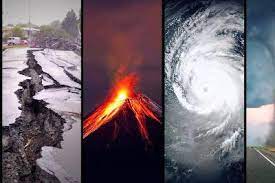There is no country that is immune from disaster, though vulnerability to disaster varies. There are four main types of disaster.
● Natural disasters: including floods, hurricanes, earthquakes and volcano eruptions that have immediate impacts on human health and secondary impacts causing further death and suffering from (for example) floods, landslides, fires, tsunamis.
● Environmental emergencies: including technological or industrial accidents, usually involving the production, use or transportation of hazardous material, and occur where these materials are produced, used or transported, and forest fires caused by humans.
● Complex emergencies: involving a break-down of authority, looting and attacks on strategic installations, including conflict situations and war.
● Pandemic emergencies: involving a sudden onset of contagious disease that affects health, disrupts services and businesses, brings economic and social costs.
Any disaster can interrupt essential services, such as health care, electricity, water, sewage/garbage removal, transportation and communications. The interruption can seriously affect the health, social and economic networks of local communities and countries. Disasters have a major and long-lasting impact on people long after the immediate effect has been mitigated. Poorly planned relief activities can have a significant negative impact not only on the disaster victims but also on donors and relief agencies. So it is important that physical therapists join established programmes rather than attempting individual efforts.
Local, regional, national and international organisations are all involved in mounting a humanitarian response to disasters. Each will have a prepared disaster management plan. These plans cover prevention, preparedness, relief and recovery.


